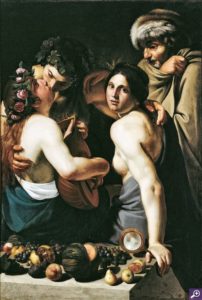by Anne Schuster Hunter
Happy anniversary! And we’re the ones getting a present.
To mark the momentous occasion of its 15th season, Tempesta di Mare is giving us a big basket of Italian treats: Antonio Vivaldi’s string concertos op. 8, nos. 1, 2, 3, and 4, otherwise known as the famous Four Seasons. Being able to hear Tempesta play what may be the best-known and best-loved pieces in the entire corpus of baroque music is cause for celebration. It’ll be something to remember.
Good things come to those who wait. In all these fifteen years, and with all of the music that the group has presented over the last decade and a half, Tempesta has never played The Four Seasons before. And there are reasons for that.
It’s a great way for Tempesta to mark a milestone: showing us our beloved Four Seasons in a whole lot of whole new lights.
Of course they’ve been holding back a reward for a special moment. But that’s only part of it. The Four Seasons represent a quandary for baroque specialists like Tempesta. At this point, the music is bigger than baroque. The Four Seasons are famous far beyond other baroque repertoire—or even other classical music—and have been for three quarters of a century. They’re hard to hear with fresh ears now.

Allegory of the Four Seasons
One of the first hits of the baroque music revival, The Four Seasons caught fire with the music-loving public in the early 1940’s. Commercial recordings appeared, interest snowballed, and the modest little Venetian string concertos started getting big orchestra versions and top marquee billing featuring violin stars like Itzhak Perlman and Joshua Bell. A 1969 version was reputed to be classical music’s best-selling recording ever, but there are hundreds more in the catalogue, too.
The Four Seasons are inextricably fixed in popular culture. That super-fast violin lick that we grew up with as the tag for Doogie Howser, M.D? It’s from Summer. And you hear the 8-note theme that opens Spring all the time–movies, TV shows, cartoons, commercials, web posts.
There’s an aspect of the poor little rich kid to The Four Seasons’ success. Sure, it’s good to have The Piano Guys make a mash-up of you with Let It Go from Frozen and it’s good to be a ring tone, but you can imagine that at this point, The Four Seasons might be feeling a little isolated and abandoned out there in the wide world. So Tempesta is bringing them in back in out of the cold.
As the headliners for anniversary season, Tempesta has embedded the inescapable Four at the center of the group’s explorations of the rest of 17th-and 18th-century music. One program pairs The Four Seasons’ Autumn, a snapshot of bumptious peasants and barking dogs, with an ultra-elegant and refined product of French aristocratic life, Clérambault’s Médée. Another places British and Italian Winters together, where the Vivaldi is just one of several.
It’s a great way for Tempesta to mark a milestone: showing us our beloved Four Seasons in a whole lot of whole new lights.
And that’s worth waiting for.
Image:
Bartolomeo Manfredi, Italian, Allegory of the Four Seasons, c. 1610.
Oil on canvas, 52 5/8 x 35 3/4”, The Dayton Art Institute, Gift of Mr. and Mrs. Elton F. MacDonald.
